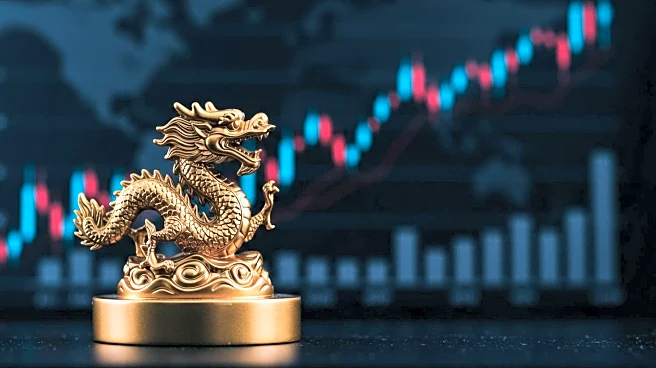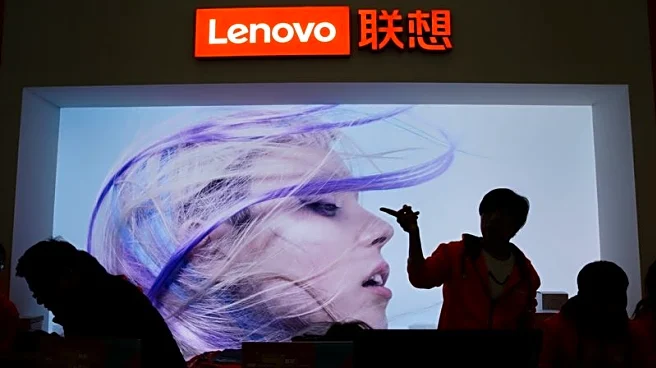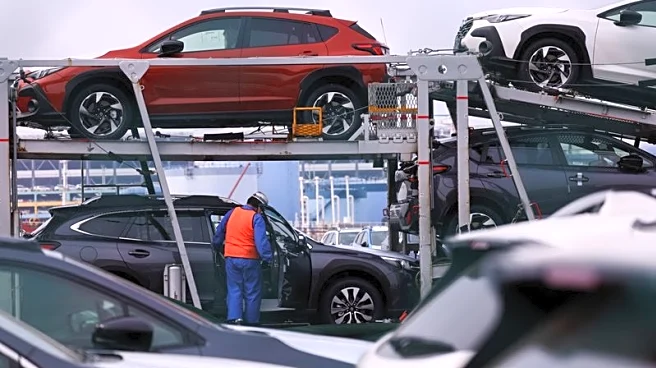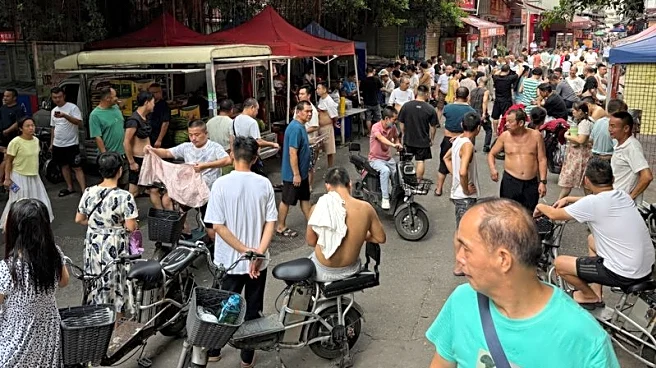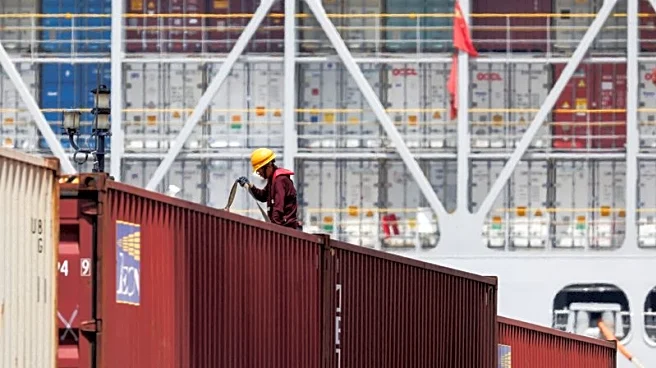What is the story about?
What's Happening?
China's economy showed signs of slowing in July, with retail sales and industrial output failing to meet expectations. Retail sales increased by 3.7% compared to the previous year, missing analysts' predictions of 4.6% growth. Industrial output rose by 5.7%, the weakest since November of the previous year, and below the anticipated 5.9% rise. Fixed-asset investment grew by 1.6% year-to-date, falling short of the forecasted 2.7% growth. The urban unemployment rate edged higher to 5.2%, with youth unemployment remaining above 14%. Despite a temporary tariff pause between Beijing and Washington, core disputes remain unresolved.
Why It's Important?
The slowdown in China's economic growth has significant implications for global markets, particularly for countries reliant on Chinese demand for exports. The weaker-than-expected performance in retail and industrial sectors suggests potential challenges for international businesses operating in China. The ongoing tariff pause between China and the U.S. provides temporary relief but highlights unresolved issues that could impact future trade relations. The economic deceleration may prompt Chinese authorities to reconsider their approach to managing excess capacity and competition, affecting global supply chains.
What's Next?
China's government may need to implement measures to stimulate domestic demand and address the challenges posed by extreme weather conditions affecting production. The continuation of tariff negotiations with the U.S. will be crucial in determining the future of trade relations. Businesses and investors will closely monitor China's policy responses to gauge potential impacts on global economic stability. The situation may also influence geopolitical dynamics, particularly in relation to China's industrial policies and international alignments.
AI Generated Content
Do you find this article useful?
